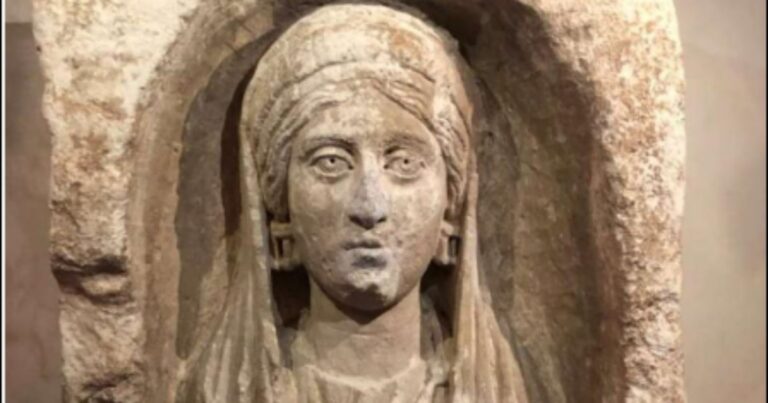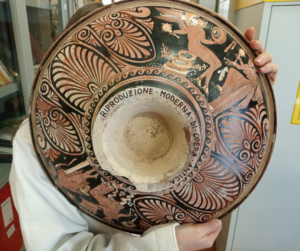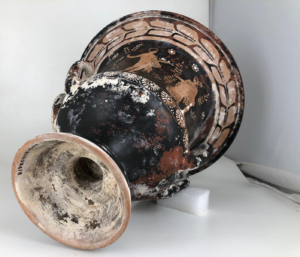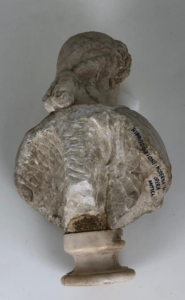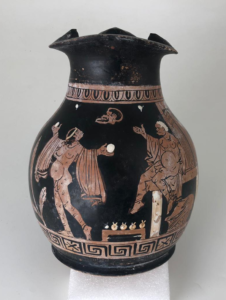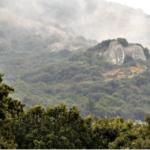The Carabinieri for the Protection of Cultural Heritage delivered to the Turkish Embassy in Rome an important funerary stele, showing the Roman bride Satornila, the object of clandestine excavations in Zeugma.
A funerary stele, showing a Roman bride named Satornila, was found during illegal archaeological excavations in the ancient city of Zeugma, in Turkey; it has now been recovered by the Carabinieri Unit for the Protection of Cultural Heritage Tpc of Venice, under the coordination of the Public Prosecutor’s Office of Florence. As a partial conclusion of the investigation, conventionally referred to as the ‘Bride of the desert’, the precious stele was delivered in Rome to the competent Turkish authorities.
The Carabinieri Tpc of Venice has delivered, Friday 28 April 2023, to the Ambassador of the Republic of Turkey in Rome, Ömer Gücük, a funerary stele with an extraordinary historical, archaeological and artistic importance, that has been illegally excavated and then illicitly exported from Turkey.
The press conference was attended by Yahya Coskun, Deputy Director General of the Turkish Ministry of Culture and Tourism, Zeynep Boz and Burcu Özdemir, from the Department for the fight against illegal trafficking of the aforesaid ministry.
It is a limestone stele, a material known as the ‘Gaziantep Formation’ in geological literature, that was widely used for statues and steles in the necropolis of Zeugma during Roman times. The stele, rectangular in shape, shows a niche with an arch at the top. Inside the niche there is a bust of a woman, representing a noble Roman bride, wearing a chiton and a draped veil (himation). Her right-hand rests on the left side of her breast, holding the himation that is covering her head. In his left hand, she holds a spindle and part of her dress. Below the bust there is an ancient Greek funerary inscription: “Satornila, the wife who loves her husband, goodbye!“. The dimensions, iconographic representation, style and manner of the artwork belong to the so called ‘Yaman 2.1.21 group’, which finds precise and numerous comparisons in the Zeugma necropolis, with specimens still extant on site, or exhibited in Turkish museums. Furthermore, the traces of soil cemented on the stele, which were analyzed, were linked to that Turkish city.
The stele has been considered, by the specialists involved in the investigation, to be an artwork of extraordinary importance, representing historical and artistic elements of Zeugma during the Antonine Roman period, spanning from the second quarter of the 2nd century to the end of the 2nd century AD. For archaeologists, this is an important discovery that will shed new light on prosographical and genealogical research in Zeugma, as well as on the existence of local families that later acquired Latin names after obtaining Roman citizenship.

The city of Zeugma, from whose necropolis the stele was illegally excavated, was founded around the year 300 B.C. by Seleucus Nicatore, General of Alexander the Great, on the right bank of the Euphrates River, in an area that is now part of the province of Gaziantep, Turkey. The city, also famous for its Roman mosaics, has been subject to numerous conquests and occupations over the course of history, by virtue of its strategic and commercial importance.
The stele was seized by the Carabinieri Tpc of Venice, in a location in the province of Florence, in March last year, following a house search of a person already under investigation. He had brought it into the country by purchasing it previously in France. For this artwork, he had asked the Export Office in Florence, an office of the Ministry of Culture that deals with the circulation of cultural goods, to issue a temporary entry certificate, presenting the good as coming from Italian archaeological contexts. This certificate serves a commercial purpose in that, for five years, imported goods are not subject to national protection regulations: for example, it can be exported abroad, regardless of any assessment of cultural interest to the Nation. In view of the consequences that the issue of this certificate entails, the Export Offices first of all carry out the same checks as those envisaged for the definitive exit from the national territory on the goods covered by the application. Therefore, since the stele had been presented as an ‘Italic’ archaeological asset, the Export Office in Florence asked the holder to submit documents attesting to his own or others’ possession of the asset prior to 1909 (the year from which Italian protection for archaeological assets was introduced), as well as documents attesting to the legitimacy of the stele’s original exit from Italy. In response to these requests, the holder withdrew the application for the issue of the certificate.
In the investigation to reconstruct the international circulation of the Stele, the use of the ‘Database of illicitly stolen cultural goods’ by the CC Tpc and the involvement of the International Police Co-operation Service was crucial. The purely investigative action, also made use of the work of various protection and research organizations in the field of cultural heritage. In addition to the already mentioned Export Office in Florence, there are the Universities of Bologna, Harvard and Lyon, the Ministry of Cultural Heritage Offices in Venice and Padua and the Center National de la Recherche Scientifique. Once the origin of the asset was established, the contribution of the Department for Combating Illicit Trafficking – International Affairs Unit of the Turkish Ministry of Culture and Tourism and Ankara University was vital.
As part of the same investigation, four modern reproductions of precious archaeological finds were also found, which were already circulating on the international market as authentic goods. The required indications of non-authenticity have been affixed to these goods.
The fight against the illicit trafficking of archaeological artworks is one of the investigative guidelines that the Venice CC Tpc Unit pursues, through constant checks at businesses in the sector, through the careful collection of reports from experts and people interested on it, and thanks to the cooperation with the central and peripheral offices of the Ministry of Culture. The return to the public heritage of these assets, material evidence of civilisation value, brings back, to collective use, objects that tell the story of territories and communities.
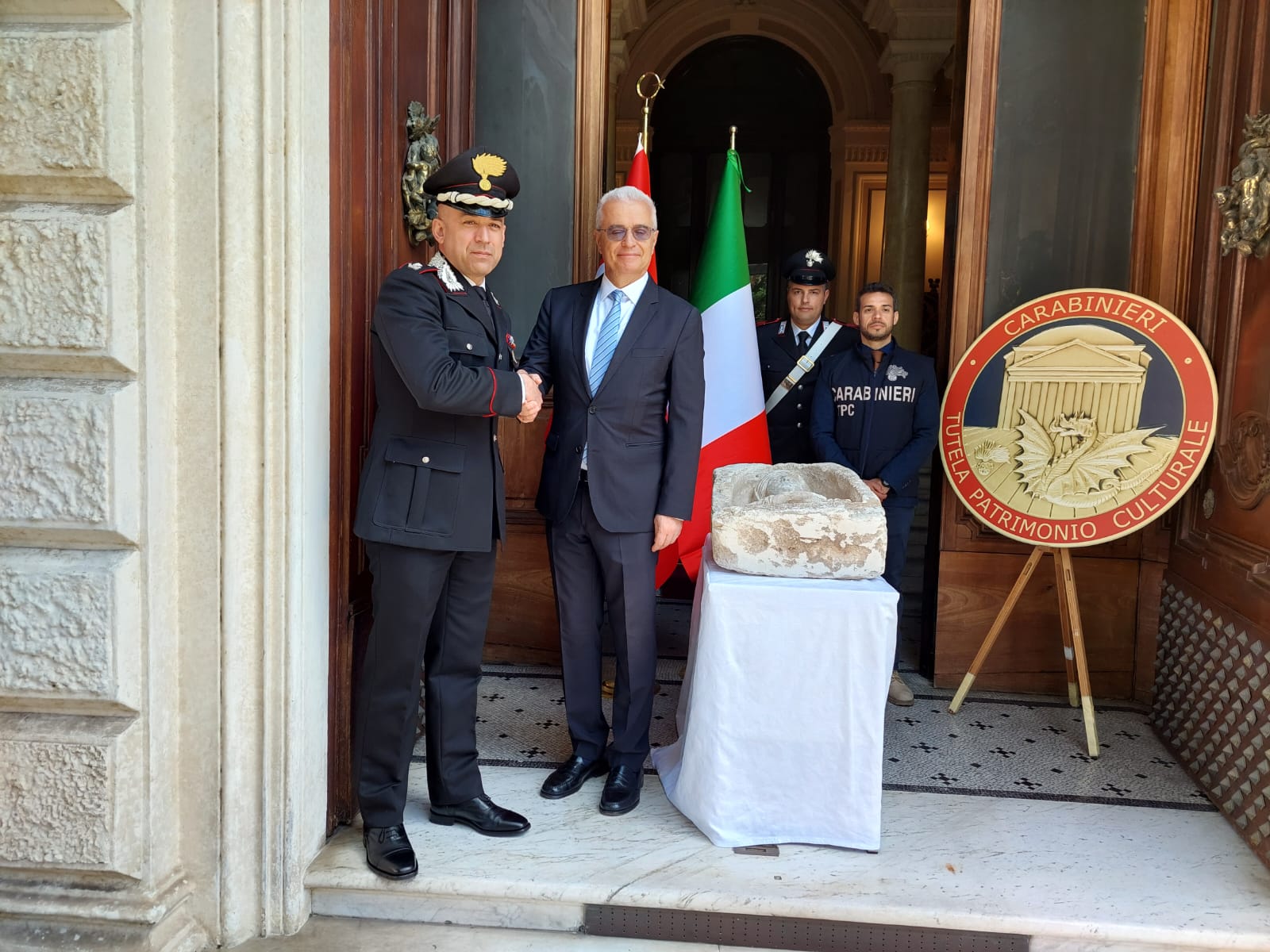
Press release from the Carabinieri Command for the Protection of Cultural Heritage

